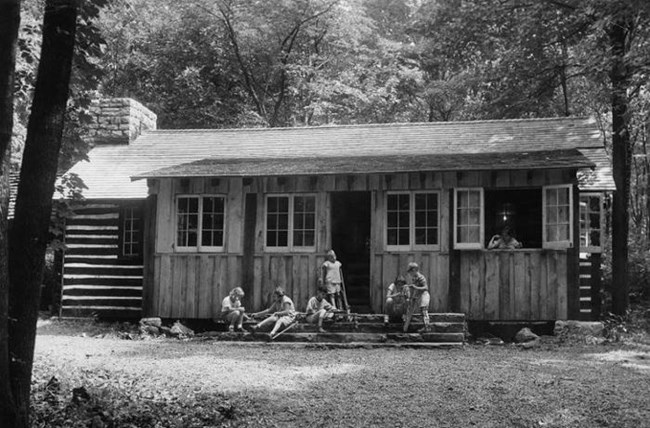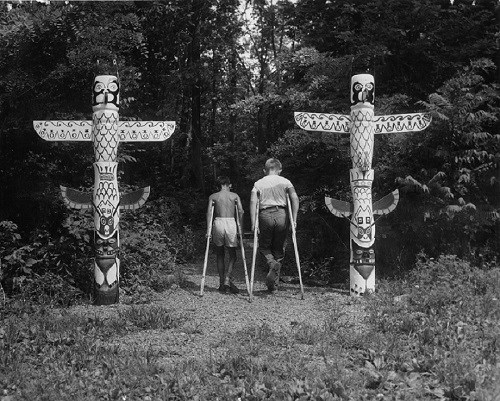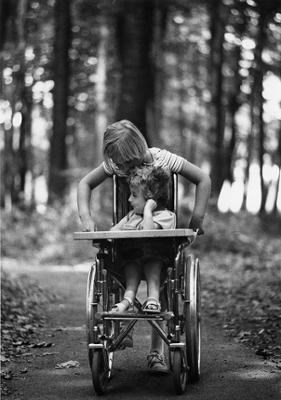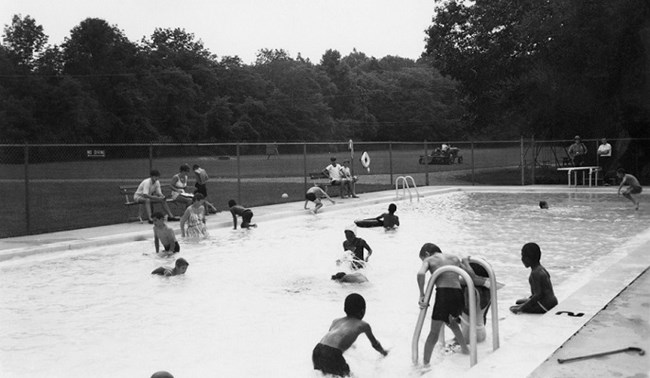|
Since 1937, Catoctin Mountain Park has welcomed youths and adults with disabilities to Camp Greentop. Greentop is Maryland’s oldest camp for people with disabilities. Like Catoctin itself, Greentop has a rich history of welcoming diverse populations across its accessible landscape. Memories of former campers evoke what an important place this is, as documented through oral history interviews. Note: These interviews have been edited for clarity. Creating Catoctin Mountain ParkKnown for its breathtaking vistas of the Blue Ridge Mountains, Catoctin Mountain Park is an easy drive from Washington, D.C. and the surrounding states of Virginia, Maryland, Pennsylvania, and West Virginia. This prime location was central to the federal government’s decision, in 1935, to establish the Catoctin Mountain Recreational Demonstration Area (RDA) in the northern section of the mountains. The Catoctin RDA, which was managed by the National Park Service (NPS), provided recreational opportunities, such as log cabin camping at Camps Greentop, Misty Mount, and Hi-Catoctin. In 1954, the southern half of the Catoctin RDA was transferred to the State of Maryland, becoming Cunningham Falls State Park, while the northern half remained under federal ownership and was re-named Catoctin Mountain Park. Early YearsIn 1937, The Maryland League for Crippled Children (which is now The League for People with Disabilities) took an interest in the three Catoctin Mountain RDA camps proposed for construction. They lobbied the federal government, asking if they could use one of the camps on a seasonal basis. The League initially received permission to use Camp Misty Mount, which was constructed in the spring of 1937 according to standard NPS children’s camp plans. That year, the group used Misty Mount for two months, in July and August, and found that the camp was built on uneven terrain, which was not suitable for their needs. In the spring of 1938, the Catoctin RDA completed the construction of a second camp, Greentop, which was located on level ground and built with input from The League. The League began using Greentop annually in 1938. In 1942, all three Catoctin RDA camps were temporarily closed to the public in association with World War II. Greentop reopened to The League in 1947. 
The League/Frank A. Spinek Arriving at GreentopCampers delighted in Greentop’s activities. For many, this was their first time leaving home. Sally Staehle was one camper who attended for several years in the 1970s. She shared her memories for an oral history project that gathered information about Greentop. Upon arriving, she felt a mix of excitement and hesitation. Recalling her preparations for camp, Staehle recounts, I was around seven years old when I first went there. I grew up in a very small, close-knit community. I would venture across the street to our school and down the street to our church, and that was my whole world. I was born without an arm below my right elbow. So I have maybe two inches or three inches of arm and then I don’t have the rest of my arm and hand. When my mother told me about Camp Greentop, it was my very first thought of ever leaving the little community that I lived in. I was partly scared and partly excited. I got my very first suitcase that I ever had in my whole life. It had little silver hooks on it that said “vacationer.” It was quite a while before I went off to camp [laughs], but I would open my suitcase and pack…
The League organized a bus to bring campers from Baltimore, Maryland to Catoctin. Camp counselors welcomed Staehle and took her to the cabins. She shared a cabin with seven other campers, with four bunks in each room. Each day, Staehle got dressed and ready, then headed to the dining hall. Following breakfast, counselors announced the possibilities for the day: hikes, berry-picking, craft-making. These activities kept campers busy until they returned to the dining hall. After lunch, they enjoyed a rest hour in their cabins. Activities then resumed until suppertime. Evening activities included campfires, performances, and ghost stories. 
The League/Frank A. Spinek Bonding through NatureCampers lived with different disabilities. Some were physical. Others were cognitive or affected the senses. Some campers were independent, but counselors were ready to assist. As the camp grew, it became better equipped to welcome more people with different needs. Looking back on her time at Greentop, Staehle recognized she camped among children who were both different from and similar to herself. I remember the disabilities that people had at camp were not really very complicated. The campers were fairly able-bodied, like me. Then there came a time when they started taking people with more complex disabilities and people in wheelchairs. And now, being 60 and looking back on it, we, as a group of diverse people, had a bond. When I run into another person who was a camper, we just connect immediately.
Richard (Dick) Doran was another counselor who shared fond memories of Camp Greentop with an interviewer. He served eight seasons as a recreation assistant and three as director of camping and recreation. He oversaw many activities for campers, including job-training workshops and “Friday Flings,” where campers danced, played games, and socialized. During the non-summer months, there were different programs like bowling and other outings. The League staff were involved in coaching and transporting athletes around the country to compete on a national basis. There’d be a Friday Fling, where adults would show up and dance and socialize, just like anybody else. The League also had an employment workshop, where they taught people skills how to hold jobs. They also had their own heated pool for therapy purposes. There was a ramp leading into it, as well as a Hoyer lift for people who couldn’t get down the ramp. That way, staff take someone in a wheelchair directly into the water without having to transfer them.

The League Accessible DesignAt Greentop, campers were not defined or excluded by their disabilities. Adaptations in camp design ensured their participation. Campers could enjoy the range of opportunities available at Greentop. In the 1960s and 1970s, the NPS built fire circles and a stable. They installed hard surface paths, grab bars, accessible paths and benches, and concrete ramps. Campers enjoyed the Spicebush Nature Trail, built in 1977 by the Youth Conservation Corps. This wheelchair-accessible trail is still available for campers and visitors today. Other activities, like swimming and horseback riding, kept campers busy. 
The League To learn more about Camp Greentop see:Richard Doran and Sally Staehle. Interviews by Joan Zenzen. Catoctin Mountain Park Oral History Project. Catoctin Mountain Park. Thurmont, MD. 2014 and 2015. The oral histories referenced in this article were conducted by Joan Zenzen in 2014 and 2015 as part of the Catoctin Mountain Park Oral History Project. They are stored at Catoctin Mountain Park.
|
Last updated: February 16, 2023
